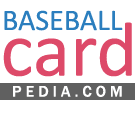The Details
One box of 2004 Fleer Tradition Baseball (paid $55 for box)
36 packs of 10 cards (MSRP $1.49/pack)
Base Set: 500 cards
Broken Down by Short-Print Scheme:
Short Set: Cards 1-400
Basic Card Short Prints: Cards 401-445 (1:2)
Stand Outs: Cards 446-461 (1:6)
Award Winners: Cards 462-470 (1:9)
Trio Prospects: Cards 471-500 (1:3)
Parallels: NONE
Inserts:
This Day in History (15 cards, 1:18)
Diamond Tributes (20 cards, 1:6)
Retrospection Collection (10 cards, 1:360)
Career Tributes (10 cards, production varies*)
Career Tributes Die-Cut (10 cards, production varies*)
* Odds of finding a Career Tributes, or CT Die-Cut: 1:36
Autogamers **:
This Day in History Game Used (1:288)
This Day in History Dual (numbered to 25)
Diamond Tributes (1:36)
Diamond Tributes Patch (numbered to 50)
Stand Outs Game Used (1:41)
Stand Outs Gold (production varies)
Retrospection Collection Autographed (numbered to 60***)
Retrospection Collection Dual (numbered to 19***)
** Odds of finding a Game Used Card: 1:18
*** Odds of Finding an Retrospection Collection Autograph: 1:720
The Pulls:
Base Set: 348 of 500 (69.60%)
Short Set: 308 of 400 (77.00%)
Basic Card SPs: 18 of 45
Stand Outs: 6 of 16
Award Winners: 4 of 9
Trio Prospects: 12 of 30
Inserts:
2 This Day in History: Sosa, Soriano
6 Diamond Tributes: V. Guerrero, Ja. Giambi, R. Johnson, P. Martinez, J. Beckett, M. Prior
1 Career Tributes: M. Schmidt /1989
Autogamers:
1 Diamond Tributes: R. Sexon
1 Stand Outs Game Used: R. Baldelli
The Review:
For the 24th year, Fleer brings us their flagship product, the 500 card 2004 Fleer Tradition. For the first time since 1999, Tradition features a completely original (or in the case of the 2001 Fleer Trad set, somewhat original) design. Althought he design is different, the rest of the product remains consistent with what the brand has offered in recent years.
The set is broken down into 10 World Series Highlights, 30 Team Leaders, 405 regular cards, and three short-printed subsets: 16 Standouts, 9 Award Winners and 30 Trio Prospects. In addition, 45 of the 405 regular cards are also SPed and, although these cards are not marked as such, it appears that cards 401-445 are the SPs. Each 36-pack box should yield about 40 of the SPs. The Award Winners subset needs a little explaining. They’re one of those, let's-double-up-on-the-superstar-player themed subsets. Here's the strange part: they have the same exact design and photograph as the player’s regular card (kind of like a parallel), the only difference being the addition of an “Award Winners” seal on the front. Very weird. There are no parallels in the traditional (no pun intended) sense. But if recent history is any indicator, Fleer is probably saving them for the Update set.
Two of the four insert sets are holdovers from previous Fleer Trad brands: The 10 card This Day in History and the 20 card Diamond Tributes. Going further up on the scarcity scale, are the 10 card Career Tributes. These foil-fronted cards remind me of those cheesy “Gold Cards” you see advertised in the Sunday paper’s coupon section. Right between the $1.00 off Frosted Flakes and the Dale Earnhardt collector’s plate. They come in both regular and die-cut flavors. The scarcest insert of all is the 10 Retrospection Collections. Done in the style of the 1960 Fleer Baseball Greats set, it features all of the top rookies and a couple of young stars. As I mentioned on the review of 2004 Ultra, just about every recent Fleer baseball product has included one insert set that’s a little bit scarcer than the rest. According to my calculations, only 223 copies of each Retro-Coll were inserted into packs. You shouldn’t expect to pull one, but if you do, you might have a card that’s actually worth something.
Another trend of recent Fleer sets is to make all the Autographed and Game-Used cards pseudo-parallels. You’re promised two autogamers in a box, and the one’s you’ll probably pull are from the Diamond Tributes and Stand Outs series. The DT’s also come in a patch version numbered to 50 and the SO’s come in a gold version. The scarcest pull among the gamers are the This Day in History GUs, which also come in a dual version numbered to 25. The only autographed cards in Tradition are signed versions of the Retrospection Collections. These cards are numbered to 60 copies with a dual signed version numbered to 19.
The Bottom Line
No complaints on this box’s collation. No doubles, and all inserts ran as promised. I paid about $55, but since I purchased this box I've seen it selling in the $45-$50 range. Judging by the size of the base set and the recent track record of this brand, we’re not likely to see a formal “series 2” of Tradition this year (again). More than likely, Fleer will release another one of those update sets that’s not really an “Update” set. Like I suggested in my review of 2003 Fleer Tradition Update, this is a product that would be better if it were a 600-700 card base set followed up by a real “Update” set of 150-200 cards (preferrably in a factory set). I’d also be remiss if I did not mention the short-prints. Why does Tradition still have SPs? What purpose do they serve in a product like this? The set would be so much better without them.
Collation Rating: 4 Gumsticks (out of 5)
Product Rating: 2 ½ Gumsticks
Do I recommend this product: Chances are, if you’re like me, you have a complete run of Fleer/Fleer Tradition set from 1981 on. Therefore, I shouldn’t have to tell you to buy this product. It is cheap (by today's standards) and the design is pretty nice, but the SPs kill this product.






